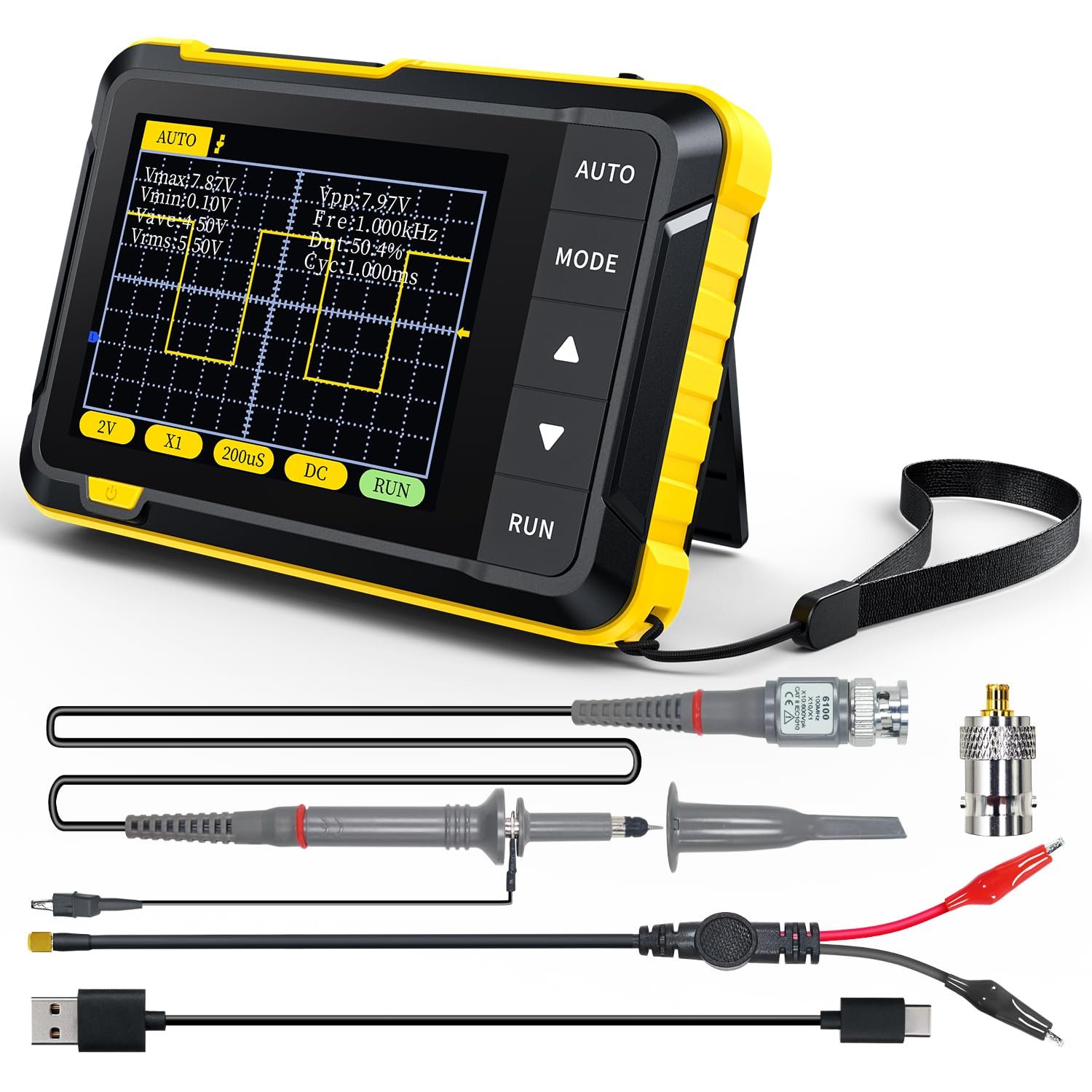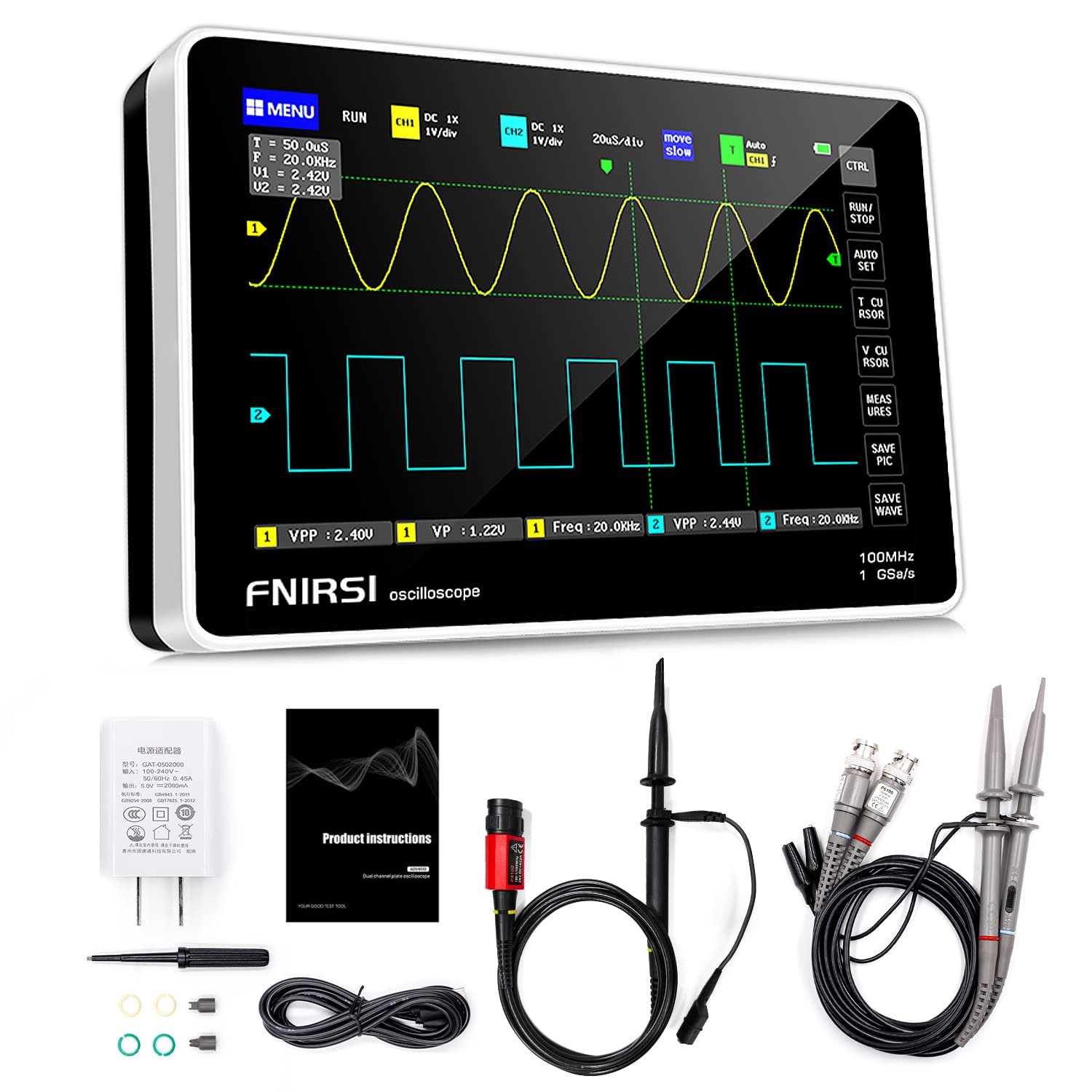Oscilloscopes are indispensable tools in the world of electronics, allowing you to visualize and analyze electrical signals. These versatile instruments have come a long way since their inception, evolving from bulky analog devices to sleek digital powerhouses. Whether you’re a hobbyist tinkering with circuits or a professional engineer debugging complex systems, an oscilloscope is likely to be a crucial part of your toolkit.
Electronic oscilloscopes have revolutionized the way we interact with and understand electrical signals. They display voltage changes over time, providing invaluable insights into circuit behavior, signal integrity, and troubleshooting processes. Modern digital oscilloscopes offer features like high sampling rates, multiple channels, and advanced triggering options, making them suitable for a wide range of applications.
When choosing an electronic oscilloscope, you’ll want to consider several key factors. Bandwidth is crucial, as it determines the highest frequency signal you can accurately measure.
Sampling rate affects the oscilloscope’s ability to capture fast-changing signals, while memory depth influences how much waveform data you can store. Other important aspects include the number of channels, display quality, and built-in analysis functions. By carefully evaluating these features, you can find an oscilloscope that meets your specific needs and budget.
Best Electronic Oscilloscopes
Looking to up your electronics game? You’ll want to check out these top-notch oscilloscopes. We’ve rounded up the cream of the crop to help you find the perfect tool for your projects and experiments. From budget-friendly options to professional-grade equipment, there’s something here for every science enthusiast.
FNIRSI Pocket Oscilloscope
This portable oscilloscope offers good value for hobbyists and students looking for a basic waveform display tool.
- Compact and easy to carry
- One-button auto setup
- Long battery life
- Limited 200 KHz bandwidth
- Single-channel only
- Small 2.8″ screen
The FNIRSI DSO152 packs impressive features into a pocket-sized package. It has a 2.5 MS/s sampling rate and 2.8-inch LCD display, which provide clear waveform visualization on the go. The built-in 1000 mAh battery keeps you measuring for up to 4 hours on a single charge.
Setting up measurements is a breeze with the one-key auto function. Just press a button, and the oscilloscope adjusts parameters to display your waveform instantly. This makes it ideal for quick checks and troubleshooting in the field.
While not a replacement for a full-sized bench oscilloscope, the DSO152 serves well for basic signal analysis. Its 200 KHz bandwidth suits audio work and low-frequency applications. The device includes full trigger functionality, allowing you to capture both periodic and aperiodic signals effectively.
FNIRSI 1013D Plus Portable Oscilloscope
You’ll find the FNIRSI 1013D Plus to be a versatile and user-friendly oscilloscope that’s perfect for both hobbyists and professionals on the go.
- Portable and lightweight design
- High-resolution 7-inch touchscreen
- Impressive 1 GSa/s sampling rate
- Interface takes time to master
- Limited to 100 MHz bandwidth
- Some users report issues with BNC connector tightening
This handheld oscilloscope packs a punch with its 100 MHz bandwidth and 1 GSa/s sampling rate. You’ll appreciate the crisp, clear visuals on the 7-inch TFT LCD touchscreen, making it easy to analyze waveforms in detail.
The device’s portability is a standout feature. With its slim profile and 6000 mAh battery providing up to 4 hours of use, you can take your measurements anywhere. It’s ideal for field work or quick diagnostics without lugging around bulky equipment.
You’ll find the FNIRSI 1013D Plus equipped with useful features like Lissajous graphic display and FFT viewing. These tools allow you to compare signal characteristics and estimate harmonic content, enhancing your analysis capabilities. The 1 GB storage space lets you save up to 1000 screenshots and waveform data sets, so you can review your findings later.
ZOYI 3-in-1 Handheld Oscilloscope
You’ll find this versatile device incredibly useful for your electronic measurements and experiments.
- Multi-functional design combining oscilloscope, multimeter, and signal generator
- Dual-channel capability with 50MHz bandwidth in high-speed mode
- Compact and portable for on-the-go use
- Learning curve for beginners
- Limited storage depth compared to higher-end models
- Power consumption increases in high-speed mode
The ZOYI 3-in-1 Handheld Oscilloscope packs a punch with its multiple functionalities. You’ll appreciate the dual-channel oscilloscope feature, capable of measuring various waveforms including pulse, circular, and noise. The AUTO recognition function comes in handy when dealing with unknown waveforms, saving you time and effort.
In multimeter mode, you get an impressive 25000 count display. This allows for precise measurements of resistance, capacitance, continuity, diodes, and current. Whether you’re working on a complex circuit or troubleshooting a simple device, this tool has got you covered.
The device offers two operating modes to suit your needs. Normal mode provides a 200MSa/s sampling rate with 30MHz bandwidth, ideal for everyday use and conserving battery life. When you need extra power, switch to high-speed mode for a 280MSa/s sampling rate and 50MHz bandwidth. The 128K storage depth might be limiting for some advanced users, but it’s sufficient for most applications.
Adding to its versatility, the signal generator function allows you to output various waveforms like sine, square, and triangle waves. You can observe and compare these outputs in real-time on the demonstration window. This feature expands the device’s applicability, making it a valuable tool for your scientific explorations.
The Type-C port supports both charging and data transfer, enhancing the device’s convenience. While the multiple functions may seem overwhelming at first, the user manual provides guidance for smooth operation and troubleshooting.
FNIRSI 1014D Dual-Channel Scope
This compact oscilloscope packs impressive features and performance into a portable package, making it a solid choice for engineers and hobbyists alike.
- High sampling rate and bandwidth
- Built-in signal generator
- Large, high-resolution display
- Learning curve for beginners
- Limited storage space
- Potential quality control issues
The FNIRSI 1014D offers remarkable capabilities for its size and price point. You’ll appreciate its 1GSa/s sampling rate and 100MHz bandwidth, allowing you to capture and analyze a wide range of signals accurately. The dual-channel design lets you compare two signals simultaneously, enhancing your troubleshooting and analysis capabilities.
One standout feature is the built-in DDS function signal generator. It supports 14 different waveforms and even allows you to create custom signals. This integration saves you from needing a separate device, streamlining your workspace and potentially reducing costs.
The 7-inch LCD screen boasts an 800×480 resolution, providing clear and detailed waveform displays. You’ll find the one-button AUTO function particularly useful, as it quickly adjusts settings to display measured waveforms without tedious manual tweaking. The Lissajous graphic display and FFT viewing functions further expand your analytical toolkit, allowing you to compare signal characteristics and assess harmonic content.
FNIRSI 3-in-1 Handheld Oscilloscope
This versatile device combines an oscilloscope, multimeter, and signal generator, making it a great value for hobbyists and professionals alike.
- Compact and portable design
- Multiple functions in one device
- User-friendly interface
- Limited bandwidth for advanced applications
- Battery life could be longer
- Recessed BNC connections may be tricky
The FNIRSI 2C23T packs a punch with its 3-in-1 functionality. You’ll find a 10 MHz bandwidth oscilloscope, a 10,000-count multimeter, and a signal generator capable of producing waveforms up to 2 MHz. This combination makes it a handy tool for various electrical and electronic tasks.
Its 2.8-inch HD LCD display provides clear visuals of waveforms and measurements. The built-in 3000mAh rechargeable battery offers up to 6 hours of use, which is decent for fieldwork but might fall short for extended sessions. A Type-C interface supports charging, ensuring you can keep working even when the battery runs low.
One of the standout features is the save function. You can easily capture and store waveforms, then transfer them to your PC via the Type-C connection. This capability is particularly useful for comparing measured waveforms against reference ones, enhancing your analysis and troubleshooting processes.
Buying Guide
Choosing the best electronic oscilloscope can be tricky. Let’s break down the key features you should consider when making your decision.
Bandwidth
Bandwidth determines the highest frequency your oscilloscope can accurately measure. Choose a bandwidth at least 5 times higher than the fastest signal you plan to analyze.
Sample Rate
A higher sample rate allows for more accurate signal reconstruction. Aim for a sample rate at least 2.5 times your oscilloscope’s bandwidth.
Resolution
Resolution affects the detail you can see in your waveforms. Higher resolution (more bits) means better accuracy, especially for small signal changes.
Memory Depth
More memory depth lets you capture longer signal durations at high sample rates. This is crucial for spotting infrequent glitches or anomalies.
Input Channels
Consider how many signals you need to measure simultaneously. More channels offer greater flexibility but often come at a higher cost.
Triggering Options
Advanced triggering capabilities help you isolate specific events in complex signals. Look for options like edge, pulse width, and logic triggers.
Display
A clear, responsive display makes waveform analysis easier. Consider factors like screen size, resolution, and update rate.
Connectivity
USB, Ethernet, or Wi-Fi connectivity can streamline data transfer and remote control.
Think about how you’ll integrate the oscilloscope into your workflow.
By focusing on these key features, you’ll be better equipped to choose an oscilloscope that meets your scientific needs and budget.






